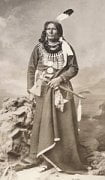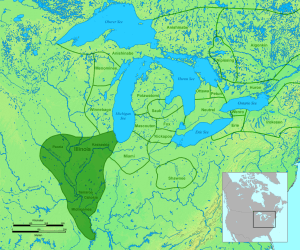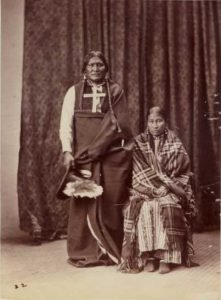Missouri
Otoe Tribe
Otoe Tribe: An extensive resource for researching the facts, history, culture, genealogy, names, towns, treaties or ethnology of the Otoe Nation.
Ioway Tribe
Ioway Tribe: An extensive resource for researching the facts, history, culture, genealogy, names, towns, treaties and ethnology of the Ioway Nation.
Michigamea Tribe
A tribe of the Illinois confederacy, first visited by Marquette when he descended the Mississippi in 1673. Their village was situated at that time on the west side of the Mississippi and near a lake bearing the same name as the tribe
Arapahoe Tribe
Arapahoe Indians, Arapaho Tribe, Arapaho Indians. An important Plains tribe of the great Algonquian family, closely associated with the Cheyenne for at least a century past. They call themselves Iñunaina, about equivalent to ‘our people.’ The name by which they are commonly known is of uncertain derivation, but it may possibly be, as Dunbar suggests, from the Pawnee tirapihu or larapihu, ‘trader.’ By the Sioux and Cheyenne they are called ” Blue-sky men ” or “Cloud men,” the reason for which is unknown.
An Overland Journey to the West
An Overland Journey to the West
Shawnee Indians
The Shawnee Tribe, meaning “southerners,” is recognized for its significant role in the history of numerous regions across the United States, with its name reflected in places from Pennsylvania to Georgia. The Shawnee were part of the Algonquian linguistic group, closely related to tribes such as the Fox, Sauk, and Kickapoo. Known for their frequent migrations, the Shawnee had historic settlements in locations like the Cumberland River Valley and Ohio, forming five primary divisions, including Chillicothe and Piqua. Their complex history of relocation, resistance against European settlers, and leadership under figures like Tecumseh and Tenskwatawa has made them a central part of early American history. Shawnee populations were dispersed over time, eventually settling primarily in Oklahoma by the 20th century.






